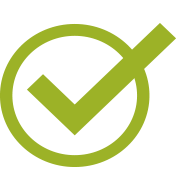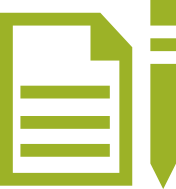Catalog Description
Hours: 54 lecture
Description: Introduction to the study of characteristics and uses of natural and synthetic fibers and fabrics. Emphasizes evaluation and selection of textile products. (CSU, UC)
Course Student Learning Outcomes
- CSLO #1: Analyze the distinguishing features of the variety of fabric categories used in the fashion industry and their end uses.
- CSLO #2: Compare and contrast methods of knitted and woven fabric construction, identifying the unique weave types and knit methods used.
- CSLO #3: Describe the different types of testing procedures used to rate performance properties of fabric.
Effective Term
Fall 2025
Course Type
Credit - Degree-applicable
Contact Hours
54
Outside of Class Hours
108
Total Student Learning Hours
162
Course Objectives
1. Through the use of a microscope, identify and analyze the characteristics of four man-made fibers obtained from fabrics;
2. use weaving in graph paper to show the three basic weave patterns;
3. identify different fabrics and their properties in today's fashions and seasonal fashion trends;
4. compare and contrast distinguishing features of 50 different fabrics using the Fabric Science Swatch Kit;
5. analyze the appropriate uses of different fabrics in today's home, business, economy and society;
6. compare and contrast aesthetic and functional finishes of fabrics;
7. describe and identify methods of knitted and woven fabric construction;
8. identify different fabric testing procedures done in the textile industry to rate performance properties of fabrics;
9. discuss the impact that environmental awareness has had on the textile industry and various ways textile producers have responded;
10. describe the impact that the invention of nanotechnology has had on the textile industry; identify the various fabrics and innovations that have been created using this technology;
11. identify the importance of the interior design field in the textile industry; analyze the different properties that interior design textiles must possess; and
12. compare and contrast the two types of coloring textiles; dyeing and pigment coloring; discuss which fibers react better with each method.
General Education Information
- Approved College Associate Degree GE Applicability
- CSU GE Applicability (Recommended-requires CSU approval)
- Cal-GETC Applicability (Recommended - Requires External Approval)
- IGETC Applicability (Recommended-requires CSU/UC approval)
Articulation Information
- CSU Transferable
- UC Transferable
Methods of Evaluation
- Objective Examinations
- Example: (Quiz) After all presentations, a quiz is given where students are asked to answer questions comparing and contrasting the construction of both knitted and woven fabrics.
- Projects
- Example: Throughout the semester, students are asked to complete the Fabric Science Swatch Kit. This is a student workbook with swatches and assignments that pertain to the chapters covered in class. The student examines and compares the swatches and writes down observations under the swatches in the kit. Students are evaluated and graded on accuracy of answers and the completion of the swatch kit.
- Reports
- Example: Students are asked to complete a Fabric Trend Report that uses examples of seasonal fashion trends found in stores and are asked to identify which fabrics are used and to state the properties of the fabric. Students will be evaluated based upon the level of detail and accuracy shown in completing the written report.
Repeatable
No
Methods of Instruction
- Lecture/Discussion
- Distance Learning
Lecture:
- Instructor lectures on the different fabric performance testing procedures done in the textile industry. Instructor will guide students as they choose a specific fabric swatch and are asked to determine which testing procedure would be appropriate according to the fabric's end use and performance expectations.
- Instructor lectures on various segments of the apparel industry and which textile types are most appropriate for end uses within those segments. Students are then asked to look through the Fabric Science Swatch Kit and identify fabric swatches that would fit both the segment of the industry and the suggested end use.
Distance Learning
- After reading through a chapter slideshow lecture posted by the instructor, students are asked to compare and contrast the construction and properties of woven and knitted fabrics in a class discussion board assignment.
Typical Out of Class Assignments
Reading Assignments
1. Read the chapter on the Textile Industry and complete the study questions. 2. Read the chapter on natural and manufactured fibers and be prepared to identify them in the Fabric Science Swatch Kit.
Writing, Problem Solving or Performance
1. Identification and analysis of defective textile products. Write a report of a textile that performed unsatisfactorily. 2. Conduct a fabric experiment to identify particular fabrics.
Other (Term projects, research papers, portfolios, etc.)
1. Complete the Fabric Science Swatch Kit identifying at least 50 different fabrics and their properties. 2. Complete a Fabric Trend Report, identifying different fabrics and fibers in today's fashion trends.
Required Materials
- Fabric Science
- Author: J.J. Pizzuto
- Publisher: Bloomsbury
- Publication Date: 2023
- Text Edition: 12th
- Classic Textbook?:
- OER Link:
- OER:
- Basic Textiles Swatch Kit with Textilepedia
- Author: Amy Wilbanks
- Publisher: Textile Fabric Consultants
- Publication Date: 2022
- Text Edition:
- Classic Textbook?:
- OER Link:
- OER:
Other materials and-or supplies required of students that contribute to the cost of the course.
Fabric Science Swatch Kit, Bloomsbury Publishing, 2023 12th Edition.


